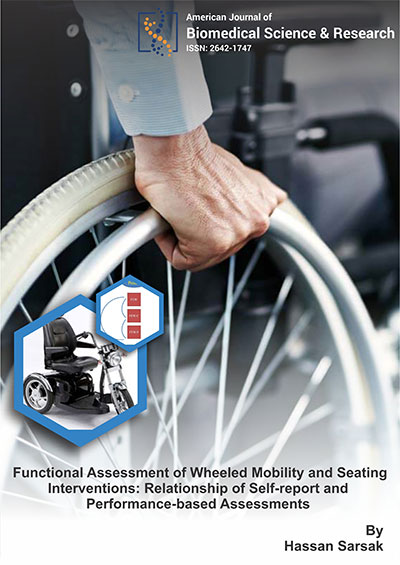 Open Access
Creative Commons, CC-BY
Open Access
Creative Commons, CC-BY
Functional Assessment of Wheeled Mobility and Seating Interventions: Relationship of Self-Report and Performance-Based Assessments
Published Online: May, 2019
Abstract: The main objective of this study was to investigate associations, concordance and differences among self-report and performance-based measures, and reveal new factors associated with changes in wheelchair function. The Functioning Every day with a Wheelchair (FEW); a self-report measure, the FEW-Capacity (FEW-C); a performance-based measure for the clinic, and the FEW-Performance (FEW-P) that measures clients’ skills in the home were the measures used in this study. Relevant literature yielded few studies that examined the associations and concordance between subjective and objective methods of assessment with wheelchair users. We conducted secondary analyses of data collected by Mills et al. (2002) and Schmeler (2005), in which participants were assessed with their current wheelchairs at pretest, and later at posttest after they received their new wheelchairs. The strength of the associations varied by time, item, and environment, and there was a stronger association between the three tools at the pretest when compared with the posttest, perhaps due to the familiarity of their current wheeled mobility device and their desire for a new wheelchair. Exhaustive CHAID analysis revealed new factors that were significantly associated with pretest to posttest changes in wheelchair function and should therefore be assessed at pretest and targeted for intervention, namely, independence, number of physical assists, safety, and tasks related to Outdoor Mobility at pretest. Furthermore, for total scores, at pretest, there was no significant differ-ence between the FEW-C and the FEW-P, whereas, at posttest, the Clinic total safety and quality scores were significantly better than the Home scores. We also found that the FEW-C was more concordant with the FEW-P compared to the FEW; therefore, clinicians may get a more accurate estimation of performance in the home from a clinic assessment compared to self-report. Clinically, the FEW tools provide complementary data which can contribute to clinical and research assessments of clients’ everyday functioning with their wheelchairs.

Sign up for Newsletter
Sign up for our newsletter to receive the latest updates. We respect your privacy and will never share your email address with anyone else.







 We use cookies to ensure you get the best experience on our website.
We use cookies to ensure you get the best experience on our website.